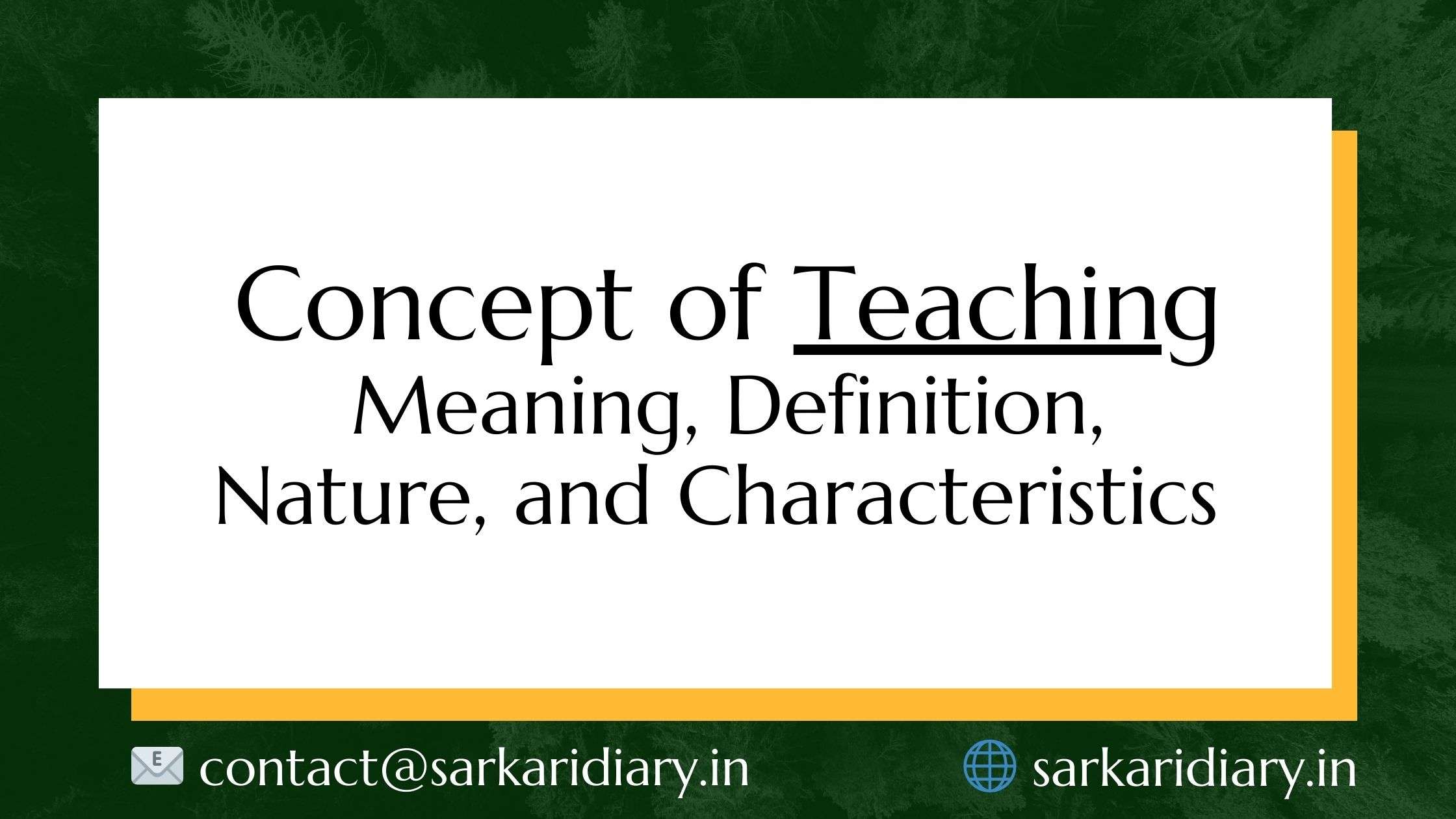Introduction
Teaching is a noble profession that plays a crucial role in shaping the future of individuals and society as a whole. It involves the process of imparting knowledge, skills, values, and attitudes to learners in a systematic and organized manner. The concept of teaching has been an integral part of human civilization since time immemorial. In this post, we will explore the meaning, definition, nature, and characteristics of teaching, shedding light on its significance and impact on education.

Understanding the Meaning of Teaching
Teaching is more than just standing in front of a classroom and delivering lectures. It involves creating an environment where learning can take place effectively. Teachers serve as facilitators, guiding students through the learning process, helping them acquire knowledge, develop critical thinking skills, and nurturing their personal and social growth.
Definition of Teaching
Various scholars and educational experts have defined teaching in different ways. According to John Dewey, an American philosopher and educator, teaching is the art of guiding learners to think, create, and solve problems on their own. In a more comprehensive sense, teaching can be defined as the process of transferring knowledge, skills, and values from one person to another through various methods and techniques.
The Nature of Teaching
Teaching is a dynamic and multifaceted process that involves several aspects. Let’s explore some of its key nature:
1. Interaction and Communication
Teaching is fundamentally based on interaction and communication between the teacher and the learner. Effective communication skills are essential for teachers to convey information, clarify doubts, and engage students in meaningful discussions. Through dialogue and active listening, teachers can create a conducive learning environment that encourages participation and mutual understanding.
2. Adaptability and Flexibility
Teaching requires adaptability and flexibility to cater to the diverse learning needs and styles of students. Teachers must be responsive to individual differences, adjust their teaching methods, and provide personalized support to ensure that every student can grasp the content effectively. Adapting teaching strategies and techniques based on the learning pace, cognitive abilities, and interests of students is vital for creating an inclusive learning experience.
3. Knowledge and Expertise
Teachers are expected to possess a deep understanding of the subject matter they teach. They need to stay updated with the latest developments in their field of expertise to provide accurate and relevant information to students. Effective teaching also involves the ability to present complex concepts in a simplified manner, making them understandable and relatable to students.
4. Patience and Empathy
Teaching requires immense patience and empathy, as students come from diverse backgrounds and have different learning capacities. Teachers need to create a supportive and non-judgmental environment that encourages students to learn at their own pace, make mistakes, and seek clarification without fear of being ridiculed. Empathizing with the challenges students face helps teachers provide effective guidance and support their overall growth.
Characteristics of Effective Teaching
Effective teaching encompasses certain characteristics that empower students and foster their learning journey. Let’s explore these characteristics:
1. Clear Objectives and Learning Goals
Effective teaching involves setting clear objectives and learning goals for each lesson or course. Teachers need to communicate these goals to students, enabling them to understand what they are expected to achieve. Clear objectives provide a sense of direction, focus, and motivation for both teachers and students.
2. Active Engagement and Participation
Engaging students actively in the learning process is vital for effective teaching. It enhances their motivation, encourages critical thinking, and promotes a deeper understanding of the subject matter. Teachers can employ various techniques such as group discussions, debates, hands-on activities, and multimedia presentations to keep students engaged and facilitate their active participation.
3. Use of Innovative and Varied Teaching Methods
Effective teaching involves utilizing innovative and varied teaching methods to cater to different learning styles and interests. Integrating technology, interactive multimedia, simulations, and real-life examples can make learning more engaging and relevant. Teachers should also incorporate cooperative learning strategies, project-based tasks, and experiential activities to foster students’ problem-solving skills, creativity, and collaboration.
4. Continuous Assessment and Feedback
Regular assessment and feedback are essential components of effective teaching. Teachers should design formative and summative assessments that evaluate students’ progress and provide constructive feedback. Assessments should not only measure knowledge retention but also assess higher-order thinking skills and application of concepts.
5. Creating a Positive Learning Environment
An effective teacher creates a positive and nurturing learning environment where students feel safe, respected, and valued. Emphasizing positive reinforcement, promoting inclusivity, and celebrating diversity contribute to a conducive learning atmosphere. Teachers should encourage healthy competition, build strong relationships with students, and foster a sense of belonging within the classroom.
Conclusion
Teaching is not a mere professional obligation but a lifelong commitment to shaping the future generation. Its significance lies in its ability to empower individuals, instill knowledge, and inspire lifelong learning. Understanding the meaning, definition, nature, and characteristics of teaching equips educators with the necessary tools to create impactful and transformative learning experiences.